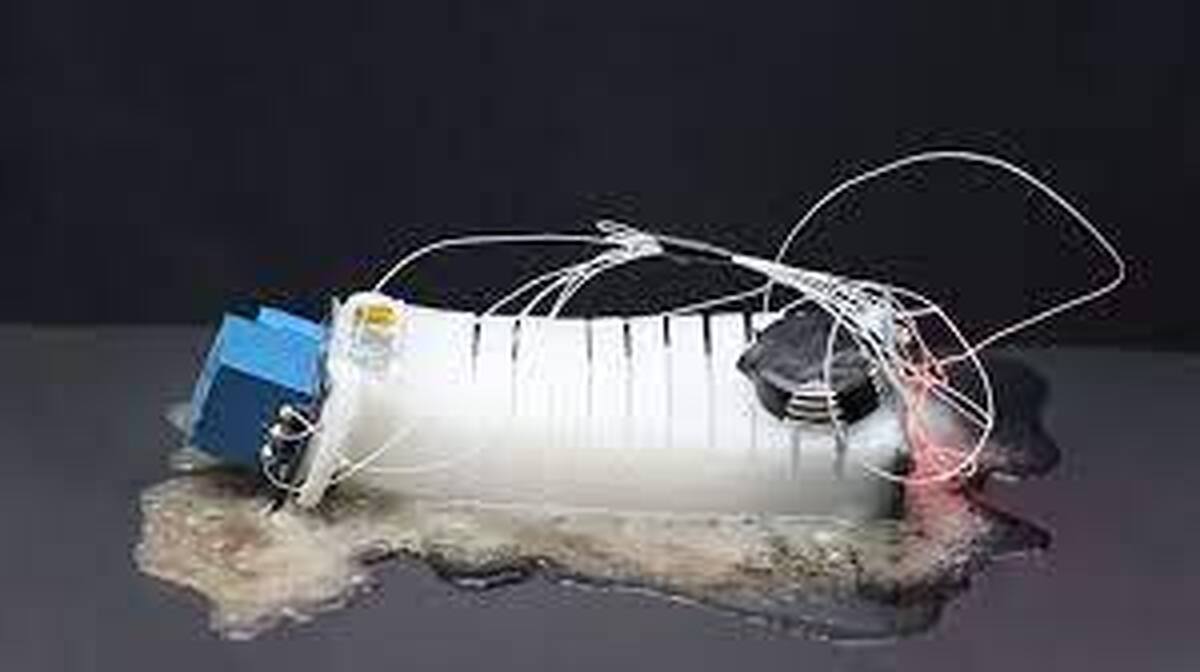This Self-Destructing Robot Vanishes into Puddle of Goo

"We have mimicked death in a life cycle where the robot could end itself," Seoul National University engineer Min-Ha Oh told Peter Grad at Tech Xplore, the journal Science Advances reported.
This 'death' is triggered by internal ultraviolet LEDs that destabilize the chemical composition of the robot. This process takes about an hour though, so it's likely we have a few decades before we'll see robots being employed as the kinds of vanishing spies proposed by the researchers.
Still, even the fictitious mimetic polyalloy Terminator must have similarly humble beginnings.
The 3 centimeter (1.2 inch) long robot body is composed of diphenyliodonium hexafluorophosphate mixed into a silicone resin. These materials allow it to remain tough but flexible enough for pneumatic-powered wriggles across a surface like a four-legged inchworm.
"Unlike conventional robots with limited degrees of freedom, soft robots demonstrate advanced functional adaptability and enable convoluted movements," the team explains, "such as delicate handling of vulnerable objects or adapting to uncertain environments."
This could prove useful for tasks such as delivering drugs to specific targets in hard-to-reach corners of our bodies, disaster zones, or ocean depths.
Oh and colleagues tasked their squishy invention with a reconnaissance mission.
Equipped with strain, temperature, and UV sensors, the little spybot was able to successfully scoot up to a gun and take its temperature, before retreating to a safe position to report its finding and initiating self-destructing.
Exposure to ultraviolet light causes the diphenyliodonium hexafluorophosphate to convert into fluoride, weakening the entire structure to the point where high temperatures will cause it to melt.
"It completely disintegrated, leaving behind an oily liquid residue of decomposed silicone composite and thin film electronics," the researchers describe.
Unfortunately the remaining puddle contained potentially toxic fluoride ions, so the researchers added a calcium chloride compound to help neutralize these. Further work is required to improve the environmental impact of the robot's gooey remains.
"'Death' and 'disposal' of soft robots after their operational lifetime have gained wide attention in terms of creating a sustainable environment for future robotic systems," Oh and colleagues write in their paper.
4155/v





















